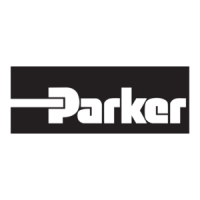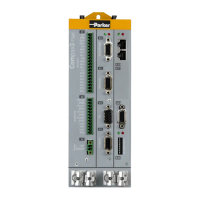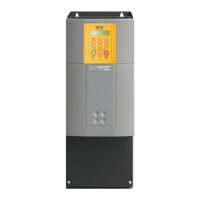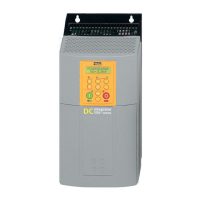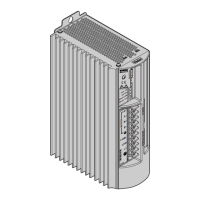Parker EME
Setting up Compax3
192-120114 N5 C3I22T11 June 2008 177
Resolution
The less precise the resolution, the higher the quantization noise on the velocity
signal.
Noise
The feedbacks have different levels of analog noise, which have a negative effect
on the control. The noise can be dampened with the aid of filters in the actual value
acquisition, however at the cost of the controller bandwidth.
For comparison, the noise of the actual velocity value at standstill of two different
feedbacks is displayed.
Resolver: 1 period/revolution SinCos: 1024periods/revolution
Typical problems of a non optimized control
In this chapter you can read about:
Too high overshoot on velocity ....................................................................................... 177
Increased following error ................................................................................................. 178
Instable behavior ............................................................................................................. 178
Upon first setup of a control, the controller is normally not able to meet all applicati-
on requirements at once. Typical problems may be:
Too high overshoot on velocity
1)
2)
1) Actual velocity
2) Setpoint velocity
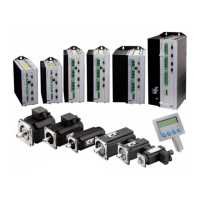
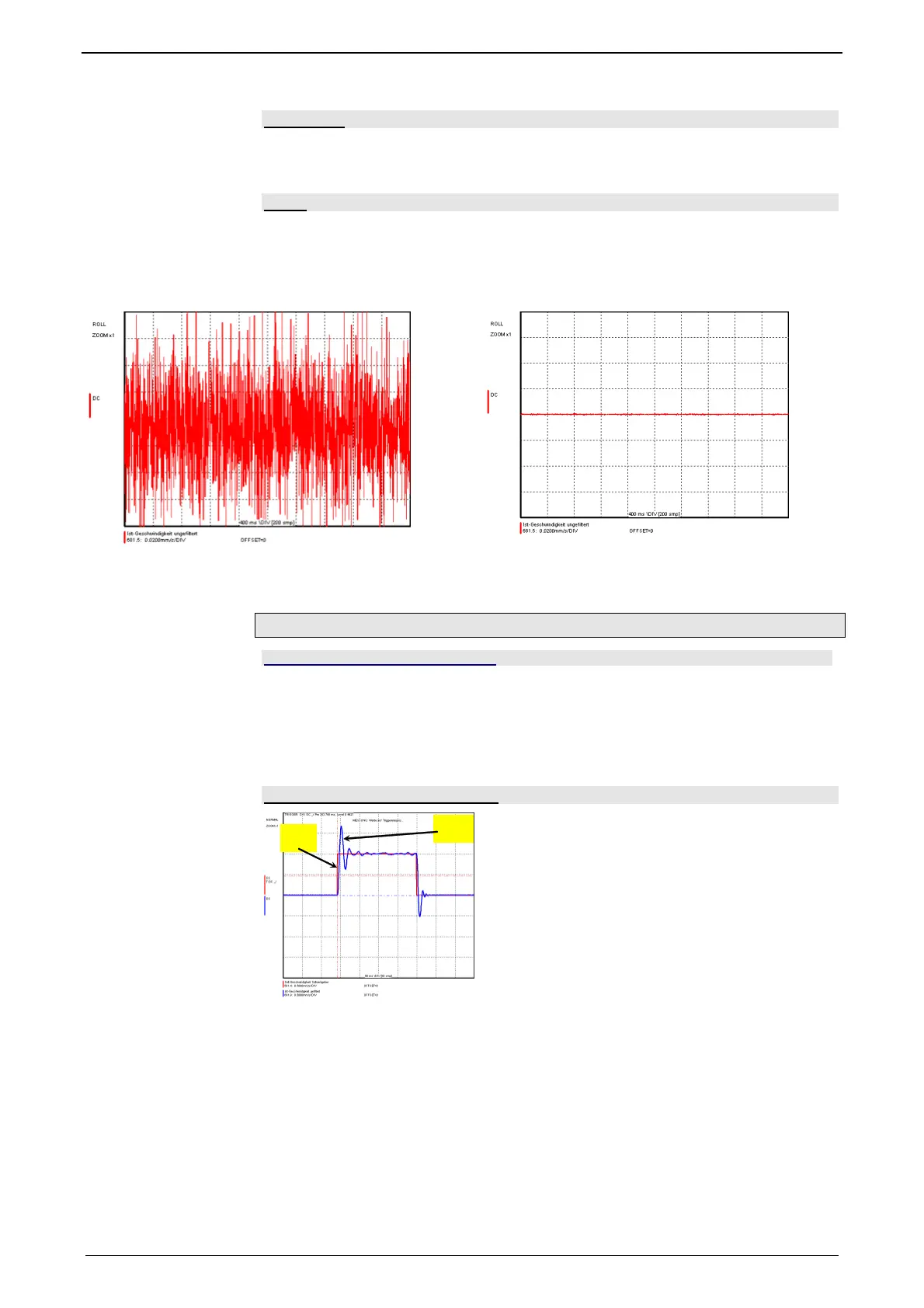